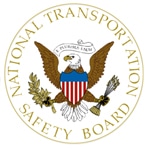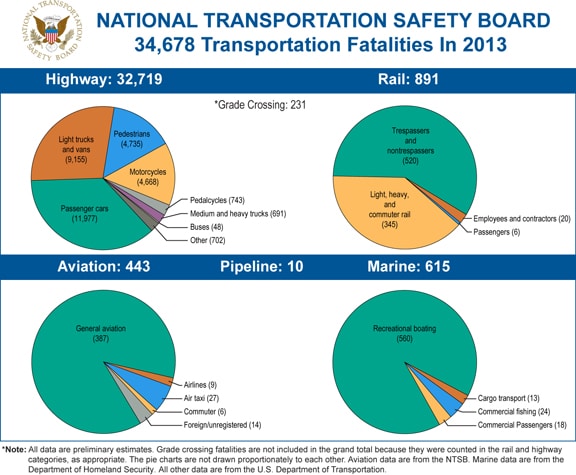BILOXI, Miss. – An eastbound CSX train hit a packed charter bus that was stuck on the tracks at approx. 2 p.m., Tuesday, March 7. Four fatalities have been reported and several people were airlifted from the scene. Nearly all of the 50 people aboard the bus were injured, several critically.
Click here to see video and read more from CNN.com.
Tag: fatalities
Conductor Kenneth Paul “K.P.” Smith Jr., 59, of Local 1313 at Amarillo, Texas, died last week (June 28) when two BNSF trains crashed just outside of Amarillo. Two others, Cody Owens, 52, and Lara Gayle Taylor, 45, also died in the crash. Owens and Taylor were former members. A fourth, unidentified conductor, jumped from the train and suffered injuries.
Smith had been a member since 1977. He was known for having a love of the outdoors and had a passion for sharing his knowledge and skills with those he loved. In his free time, Smith enjoyed scuba diving and driving RZRs.
“While devastated by the sudden loss of Kenny, we intend to spend the upcoming days and weeks remembering the love he had for his family and a good adventure. K.P. took great pride in his 39 years of service with BNSF Railway. He will be missed deeply by those whose lives he touched,” the family said in a statement to Amarillo Globe-News.
Smith is survived by his wife Donna Smith, daughter Sarah (Tomas) Wrotten, son Kellen (Tana) Smith, mother Nancy Smith, brother Ricky (Jacquie) Smith; grandchildren Saylor Wrotten; Averey, Kysen and Ansen Smith. He was preceded in death by his father Paul Smith.
A celebration of life service was held Saturday, July 2. Click here to view Smith’s official obituary or here to leave condolences for the family.
Owens hired out with BNSF in 1994. He was known for his love of horses and the cowboy way of life. He also loved to hunt, fish, snow ski and water ski. He was a member of the First Baptist Church of Claude.
Owens is survived by wife Cindy, daughter Riley Owens, sons Ty and Zackry Owens; mother Betty Owens; sisters Connie (Glen) Spiller and Cheryl (Danny) Hand; and grandmother Mildred Clendennen. He was preceded in death by his father Merle Owens.
Memorial contributions may be made to the Alzheimer’s Association, 5411 S. Bell, Ste. 411, Amarillo, TX 79109, in honor of Owens’ father. A funeral service was held Saturday, July 2. Click here to read Owens’ official obituary or here to leave condolences.
Taylor loved her son, Jacob, and enjoyed spending time with family and friends. She was an avid athlete and was often found working out at the gym. She had three cats and a horse.
Taylor is survived by son Jacob, mother Patricia Pembridge, stepfather Paul, brothers Randy (Debbi) Morris and David Morris. She was preceded in death by her father Jerry Lee Morris.
Visitation and a memorial service were held Tuesday, July 5. Memorial contributions may be made to a trust fund set up for her son Jacob Taylor of Colorado Springs, Colorado. Click here to read Taylor’s official obituary and to leave condolences.
 WASHINGTON – Transportation fatalities in the United States decreased by 3 percent in 2013 from 2012, according to preliminary figures released today by the National Transportation Safety Board.
WASHINGTON – Transportation fatalities in the United States decreased by 3 percent in 2013 from 2012, according to preliminary figures released today by the National Transportation Safety Board.Fatalities in all modes of transportation totaled 34,678 in 2013, compared with 35,796 in 2012. Deaths in marine, aviation, highway and pipeline transportation decreased, although there was a rise in rail deaths.
“While this decrease represents a good trend, much more work needs to done, because 35,000 deaths is very troubling,” said NTSB Acting Chairman Hart. “NTSB continues to address safety issues in all modes to reduce deaths and injuries on our roads, rails and waterways, as well as in our skies.”
The 2013 statistics show:
- U.S. roadway deaths, which account for nearly 94 percent of all transportation deaths, decreased from 33,782 in 2012 to 32,719 in 2013. Fatalities on buses were up from 39 in 2012 to 48 in 2013.
- Railroad deaths increased 6 percent from 840 to 891. The vast majority of these fatalities continue to be trespassers struck by trains.
- Aviation deaths decreased from 451 to 443. Nearly 87 percent of aviation fatalities occurred in general aviation accidents (387), a decrease from the previous year (440). In 2013, air taxi fatalities increased significantly from nine in 2012 to 27.
- Marine deaths also dropped in 2013, from 711 to 615. The vast majority of the fatalities, (560), occurred in recreational boating which also decreased.
Aviation statistics are tracked and compiled by the NTSB. The U.S. Department of Homeland Security provides marine statistics, and the U.S. Department of Transportation provides statistics for all other modes.?
Statistical Tables
2012–2013 U.S. Transportation Fatalities | ||||
2012 | 2013 (footnote1) | |||
Highway: | Passenger cars | 12,361 | 11,977 | |
Light trucks and vans | 9,418 | 9,155 | ||
Pedestrians | 4,818 | 4,735 | ||
Motorcycles | 4,986 | 4,668 | ||
Pedalcycles (footnote 2) | 734 | 743 | ||
Medium and heavy trucks | 697 | 691 | ||
Buses | 39 | 48 | ||
Other (footnote 3) | 729 | 702 | ||
Total, Highway | 33,782 | 32,719 | ||
Grade Crossings: (footnote 4) | (230) | (231) | ||
Rail: | Intercity (footnote 5) — | |||
Trespassers and nontrespassers (footnote 6) | 490 | 520 | ||
Employees and contractors | 19 | 20 | ||
Passengers | 5 | 6 | ||
Transit (footnote 7)— | ||||
Light, heavy, and commuter rail | 326 | 345 | ||
Total, Rail | 840 | 891 | ||
Marine: | Recreational boating | 651 | 560 | |
Cargo transport | 9 | 13 | ||
Commercial fishing (footnote 8) | 34 | 24 | ||
Commercial passengers | 17 | 18 | ||
Total, Marine | 711 | 615 | ||
Aviation: | General aviation | 440 | 387 | |
Airlines | 0 | 9 | ||
Air taxi | 9 | 27 | ||
Commuter | 0 | 6 | ||
Foreign/unregistered (footnote 9) | 2 | 14 | ||
Total, Aviation | 451 | 443 | ||
Pipeline: | Gas | 9 | 9 | |
Liquids | 3 | 1 | ||
Total, Pipeline | 12 | 10 | ||
Total | 35,796 | 34,678 | ||
1 Numbers for 2013 are preliminary estimates. Aviation data are from the NTSB; marine data are from the U.S. Department of Homeland Security; all other data are from the U.S. Department of Transportation (DOT). 2 Includes bicycles or other cycles. 3 Includes vehicle non-occupants other than pedestrians and occupant fatalities in other vehicle types, such as farm or construction equipment. 4 Grade crossing fatalities are not counted as a separate category for determining the grand total because they are included in the highway and rail categories, as appropriate. 5 Data reported to Federal Rail Administration (FRA). 6 Includes persons on railroad property without permission (trespassers) and with permission, such as repair personnel (nontrespassers). Does not include motor vehicle occupants killed at grade crossings. 7 Data reported to Federal Transit Administration (FTA). Fatalities for commuter rail operations may also be reported to the FRA and may be included in the intercity railroad fatalities. 8 Refers to operational fatalities. 9 Includes non-U.S. registered aircraft involved in accidents in the United States. | ||||
Career-ending personal injuries and fatalities have continued to increase in the rail industry.
To educate members on the circumstances of these incidents, and in attempts to avoid them in the future, the UTU Rail Safety Task Force, appointed by International President Mike Futhey, urges that each of you continue to look out for each other and forward your ideas and concerns about workplace safety to them so they may address them.
Interactive communication and “looking out for each other” is imperative to bringing us all home from work in one piece.
To ensure we all go home to our families in one piece, the UTU Rail Safety Task Force asks for a 100 percent commitment to rules compliance and to the following eight activities:
- Job briefings: Ensure all crew members are present for job briefings, and focus on risk assessment.
- Situational awareness: Constantly be aware of your surroundings and maintain situational awareness to avoid risks associated with the required tasks and work within the limits of your capabilities.
- On/off standing equipment: Keep hands free of other objects and maintain three point contact, always being vigilant for equipment movement.
- Avoid slips, trips and falls: Keep your eyes on the footpath and report any unsafe walking conditions to your local legislative representative for handling.
- Radio communications: Always use proper identification, provide car counts when shoving, do not engage in excessive chatter; use “over and out.”
- Put safety first: Performing a task safety is more important than the time it takes to complete it. The only “good move” is one done 100 percent by the rules.
- Ask questions: If any uncertainty arises, take the time to ask questions. Do not take risks or assume anything.
- Be in charge of your own safety: Do not let others set YOUR level of safety. Report harassment and intimidation.
For more information on the UTU Rail Safety Task Force, and to communicate with the task force, visit the task force’s interactive Web page by clicking:
In solidarity,
UTU Rail Safety Task Force
Greg Hynes, UTU assistant Arizona state legislative director
Steve Evans, UTU Arkansas state legislative director
Jerry Gibson, UTU Michigan state legislative director
Scott Olson, UTU Arizona state legislative director



